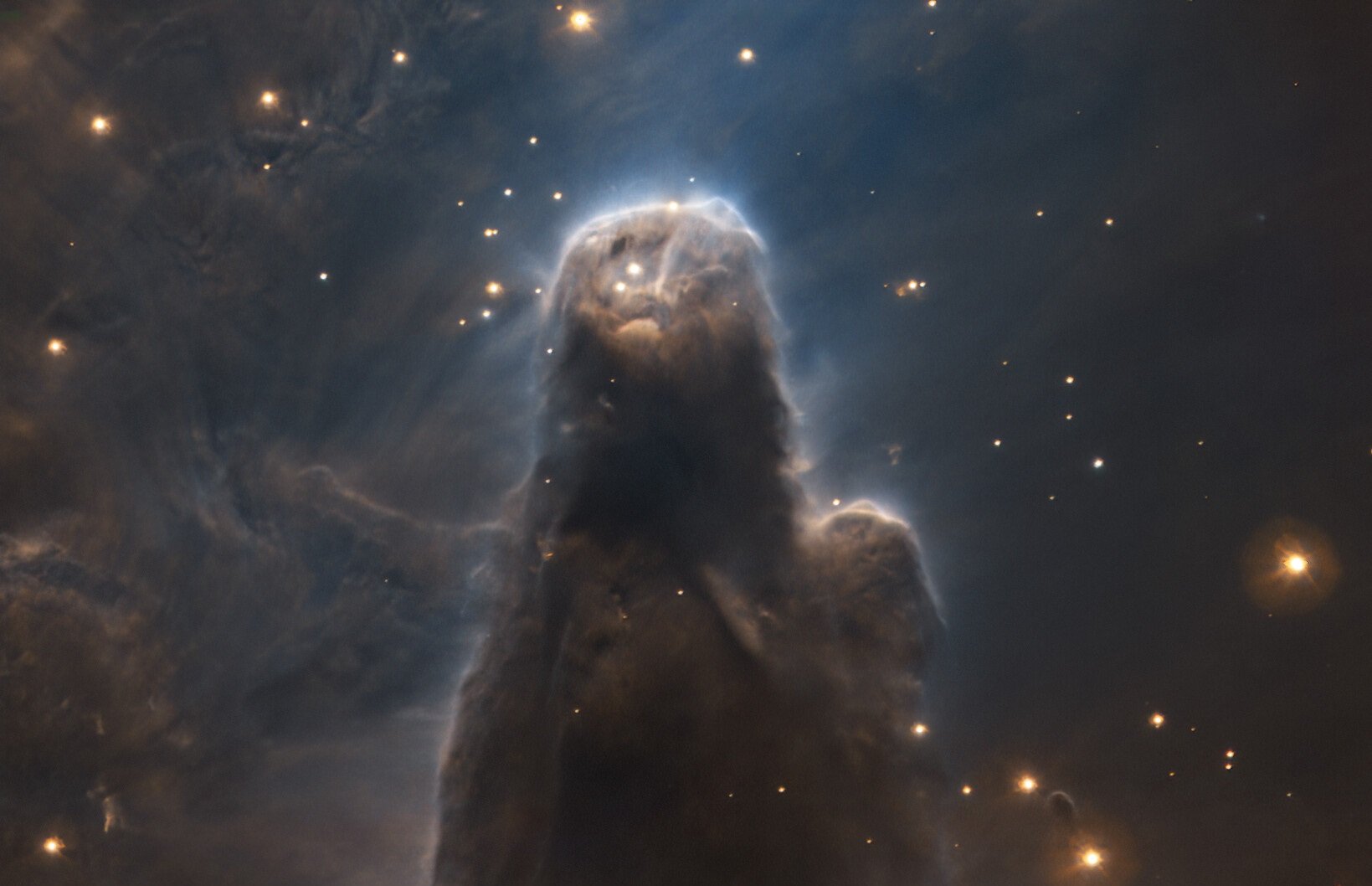Rogue planets, also referred to as interstellar, orphan, or nomad planets, are planets that do not orbit a star but instead roam through space on their own, orbiting the center of our galaxy.
In this article, we explain how they form and how many of them there are roaming our galaxy.
Image Credit: Timofey Stupak via Shutterstock / HDR tune by Universal-Sci
How do rogue planets form?
The process of how rogue planets are formed can differ. One subset is formed within a planetary system and gets flung out into space at a later point in time, while the other subset forms on its own in a way similar to stars, but on a smaller scale. Which of these processes is the most common is still unknown.
Rogue planets originating from inside a planetary system
One of the most viable scenarios for rogue planet formation is through unstable gravitational interaction between planets causing one or more planets to be flung out of the system. The ejected planet would then become a rogue planet, wandering through space on its own. As a matter of fact, it isn't entirely impossible that our own solar system may have lost a planet or two in a similar fashion during its early days when planetary migration occurred.
Gravitational instabilities in a planetary system can also result from external factors such as a collision or near miss with a rogue planet, another star, or a black hole.
The gravitational interactions that happen when two star systems pas each other can disrupt a stable orbital system as well, potentially altering the orbits of planets or even causing them to collide with a star or escape their orbit entirely.
Another possibility for planets to 'go rogue' is as a consequence of their host star exploding. Some stars go supernova at the end of their lifespan. The force of the explosion can push away a planet at extremely high speeds marking the beginning of its interstellar journey.
Image Credit: muratart via Shutterstock / HDR tune by Universal-Sci
Rogue planet formation outside a planetary system
Some rogue planets form similarly to stars, the larger ones can even be thought of as 'failed stars,' just like brown dwarf stars but with much less (planetary level) mass. The international astronomical union proposed to refer to these larger rogue planets as sub-brown dwarfs (or planetary-mass brown dwarfs).
Similar to stars, brown dwarfs, sub-brown dwarfs and rogue planets form from the collapse of clouds of gas and dust, mostly made from hydrogen and helium, but sometimes also small amounts of other elements such as oxygen and carbon.
Stars get born when the density and temperature of the gas and dust in these clouds increase, eventually getting high enough for the hydrogen atoms within the cloud to begin fusing together, a process known as nuclear fusion. This process releases a large amount of energy in the form of heat and light, making newborn stars shine.
Brown dwarfs, sub-brown dwarfs and rogue planets, however, fail to gain enough mass to instigate nuclear fusion reactions in their cores, and therefore they do not shine.
The breathtaking Cone Nebula is an example of a star forming gas cloud (it is part of a larger star-forming region known as NGC 2264). It is thought that these nebulae are also the birthing ground for rogue planets - (Image Credit: ESO)
Can rogue planets have moons?
Like normal planets, rogue planets can also have moons. Intriguingly, according to a 2021 study published in the peer-reviewed International Journal for Astrobiology, it is even possible for these exomoons to have liquid water on them.
The definition of moons becomes more interesting with the discussion about sub-brown dwarfs. They can be thought of as large gas giants, ranging from about 1 to 13 times the mass of Jupiter. Although their mass can be considerably larger than that of Jupiter, the larger ones are only about a fifth larger in diameter.
An example of a sub-brown dwarf is Cha 110913, discovered back in 2004. Interestingly, it seems to have its own protoplanetary disk. So, if one considers Cha 110913 to be a failed star / sub-brown dwarf, objects in its orbit would be referred to as planets. If you would classify it as a rogue planet, the orbiting objects would be moons.
How many rogue planets are there in our galaxy?
Astronomers estimate that there may be billions to even trillions of rogue planets roaming our galaxy. Meaning that the Milky Way could contain more rogue planets than actual stars.
The locations of 115 potential rogue planets, discovered by eso astronomers. There could be trillions of these hiding in our milky way galaxy. - Credit: ESO/N. Risinger (skysurvey.org) (click on image to enlarge)
As technology becomes more advanced, astronomers will be able to detect more and more rogue planets. As a matter of fact, astronomers have recently been able to detect an earth-sized rogue planet for the very first time.
It is expected that the Nancy Grace Roman Space Telescope, proposed to launch in 2027, will bring more clarity as to the total number of rogue planets within the Milky Way using its advanced infrared instruments.
So keep following this space for exciting future rogue planet discoveries!
Sources and further reading:
Dynamical ejections of massive stars from young star clusters under diverse initial conditions (Astronomy & Astrophysics)
Rogue planets: hunting the galaxy’s most mysterious worlds (Universal-Sci)
There might be more rogue planets than stars in the Milky Way (Universal-Sci)
ESO telescopes help uncover the largest group of rogue planets yet (ESO)
A Terrestrial-mass Rogue Planet Candidate Detected in the Shortest-timescale Microlensing Event (The Astrophysical Journal Letters)
Presence of water on exomoons orbiting free-floating planets: a case study (International Journal of Astrobiology)
How Do Planets Go Rogue? (Universe Today)
Predictions of the Nancy Grace Roman Space Telescope Galactic Exoplanet Survey. II. Free-floating Planet Detection Rates (The Astronomical Journal)
Too busy to follow science news during the week? - Consider subscribing to our (free) newsletter - (Universal-Sci Weekly) - and get the 5 most interesting science articles of the week in your inbox
FEATURED ARTICLES:









